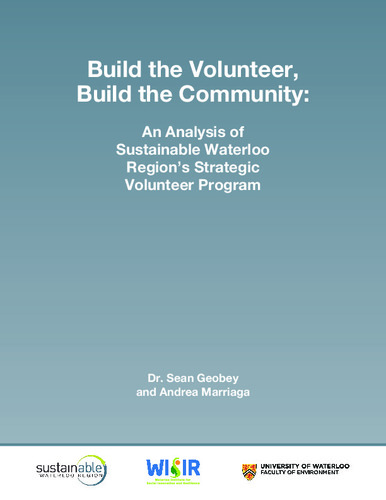| dc.contributor.author | Geobey, Sean | |
| dc.contributor.author | Marriaga Jambooz, Andrea | |
| dc.date.accessioned | 2024-04-22 14:49:24 (GMT) | |
| dc.date.available | 2024-04-22 14:49:24 (GMT) | |
| dc.date.issued | 2018 | |
| dc.identifier.uri | http://hdl.handle.net/10012/20468 | |
| dc.description.abstract | A lack of effective workforce development is a major challenge to the Canadian economy. Despite moderate increases in investment in employee learning since 2012, employer investment in workforce training is substantially less per employee today than it was in 1993 (Cotsman and Hall, 2017). This lack of investment in people hurts Canadian innovation and workforce productivity. Left unchecked, this gap leads to stagnating incomes for families and communities that get left behind in our competitive global economy. For individual workers it makes it harder for them to get on or move up their career ladder. Canada’s current labour market is highly competitive. Young workers and recent graduates today face high barriers to entering the professions they were trained for despite being the most educated generation in Canadian history. Companies often ask for previous work experience yet entry-level opportunities in many industries are tough to come by. Those in early career positions are often looking to move up in their organizations but have a hard time finding ways to exercise their skills and responsibilities in ways that will further their growth. Alongside the challenges faced by new entrants to the workforce, many nonprofit organizations lack the resources to hire paid staff to fulfill their mandates. Because of this many nonprofits rely extensively on volunteers. However, managing volunteers is time intensive for the staff that nonprofits do have and designing positions that allow volunteers to bring more than minimal skills to the table is difficult. Moreover, low-skilled volunteer positions are often a missed opportunity for volunteers to develop the skills and experiences that can directly benefit them. A deep integration of a volunteer-driven model with a nonprofit’s strategy is not to be taken lightly. In this report we refer frequently to a ‘strategic volunteer program’ because the necessary elements of the volunteer approach outlined here must be integrated into the entire strategic decision-making process to reap its full rewards. What is outlined here cannot simply rest in the hands of a volunteer coordinator – it has to be owned by the entirety of an organization’s senior leadership. | en |
| dc.language.iso | en | en |
| dc.publisher | University of Waterloo | en |
| dc.title | Build the Volunteer, Build the Community: An Analysis of Sustainable Waterloo Region's Strategic Volunteer Program | en |
| dc.type | Technical Report | en |
| dcterms.bibliographicCitation | Geobey, S. & Marriaga, A. (2018). Build the Volunteer, Build the Community: An Analysis of Sustainable Waterloo Region's Strategic Volunteer Program. University of Waterloo. | en |
| uws.contributor.affiliation1 | Faculty of Environment | en |
| uws.contributor.affiliation2 | School of Environment, Enterprise and Development | en |
| uws.typeOfResource | Text | en |
| uws.peerReviewStatus | Reviewed | en |
| uws.scholarLevel | Graduate | en |

